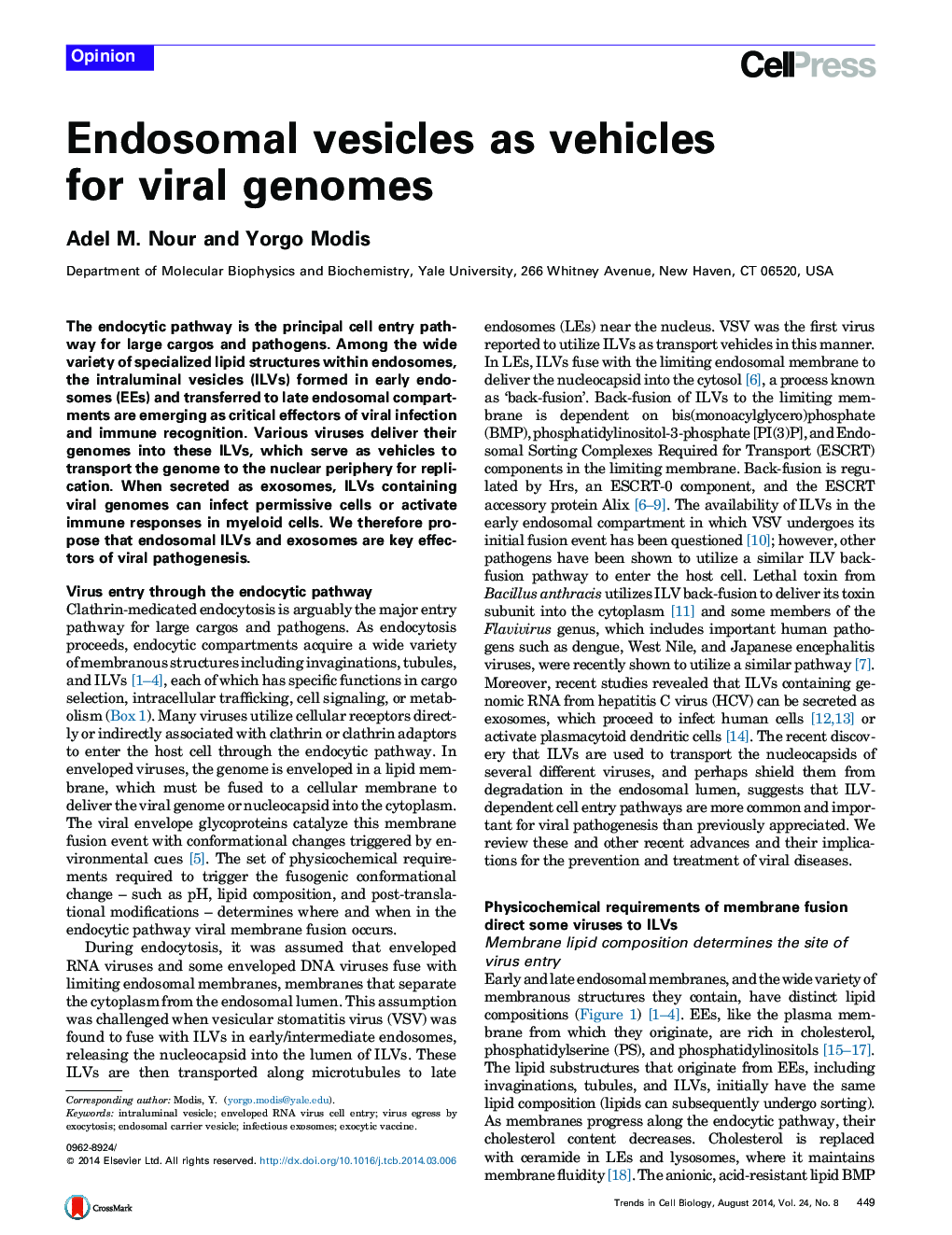| Article ID | Journal | Published Year | Pages | File Type |
|---|---|---|---|---|
| 2204519 | Trends in Cell Biology | 2014 | 6 Pages |
•Intraendosomal vesicles are key effectors of viral infection and immune recognition.•ILVs serve as vehicles to carry the viral genome to the nuclear periphery for replication.•When secreted as exosomes, ILVs containing viral genomes can infect permissive cells.•Secreted ILVs containing viral genomes can activate immune responses in myeloid cells.
The endocytic pathway is the principal cell entry pathway for large cargos and pathogens. Among the wide variety of specialized lipid structures within endosomes, the intraluminal vesicles (ILVs) formed in early endosomes (EEs) and transferred to late endosomal compartments are emerging as critical effectors of viral infection and immune recognition. Various viruses deliver their genomes into these ILVs, which serve as vehicles to transport the genome to the nuclear periphery for replication. When secreted as exosomes, ILVs containing viral genomes can infect permissive cells or activate immune responses in myeloid cells. We therefore propose that endosomal ILVs and exosomes are key effectors of viral pathogenesis.
